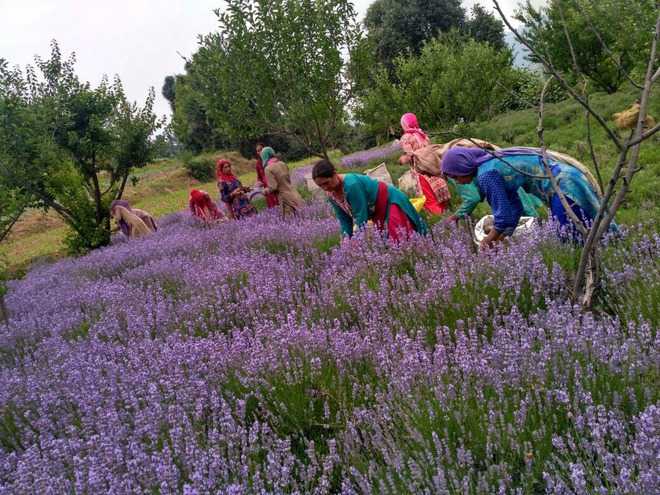3 lavender parks to come up on 500 hectares in Kashmir
Samaan Lateef
Tribune News Service
Srinagar, January 16
To boost the cultivation of lavender, an aromatic evergreen shrub used for the production of oil, the state administration is mulling to bring around 500 hectares under its cultivation in Kashmir.
Officials say a huge chunk of wasteland and Karewas can be successfully utilised for lavender production. They say it could provide an opportunity to farmers and unemployed youth to produce aromatic oils and perfumes and foray into the nutraceutical industry.
The administration has identified three locations — Sirhama in Anantnag, Alawpora in Shopian and Lal Mandi in Srinagar — to start the lavender parks.
“Our department plans to provide farmers and other aspiring entrepreneurs incentives for its cultivation and processing. We will also provide the required technical know-how for maintaining its quality,” said Altaf Aijaz Andrabi, Director, Agriculture, Kashmir.
Andrabi says the government will provide saplings and distillation plants for oil extraction.
“We will help them in the market exploration and e-trading facility. Besides, we will conduct seminars and flower shows-cum-kisan melas to spread awareness,” he said. He said 500 hectares were to be brought under lavender cultivation at a cost of Rs 16 crore.
“A farmer is expected to get 2 litres of oil per kanal, thus a return of Rs 20,000,” he said.
Researchers have seen that a visit to a lavender park has a calming effect on the mood. This could draw more tourists to the Valley.
As a lavender park in south Kashmir’s Pahalgam resort and a herbal garden at Manasbal in north Kashmir have started attracting tourists, scientists of the Indian Institute of Integrative Medicine say the state has got a huge potential of cultivating herbal medicines and aromatic plant which would add to the beauty of the Valley.
Lavender is an aromatic flowering plant cultivated extensively across the temperate regions for ornamental use or as a culinary herb.
Andrabi said lavender was a drought-resistant crop which could be grown in wastelands and required considerably less irrigation, a feature that would help farmers double their income.
The government is seeing lavender as the only crop that can hold a monopoly over other crops and be a boon to the farming community.










